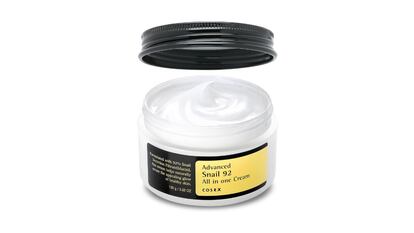A lethal cocktail for the melanoma
Melanoma is a highly invasive and aggressive tumour; it does not respond to currently available forms of chemotherapy and its incidence continues to rise worldwide. Those who are light-skinned or spend a great deal of time outdoors and are thus heavily exposed to the sun are thought to be at greater risk. Melanoma cells originate from melanocytes (Greek melas black or dark and -cyte sac or bladder that contains a fluid), the pigmented cells of the skin that are responsible for skin colour, for example the tanned or bronzed look following exposure to sunlight. Primary melanoma tumours originate mostly in the skin, but some also originate in the mouth or in the eye. The tumours can be surgically removed but only if detected early enough; early diagnosis is therefore crucial. Once the tumour penetrates deeper into the skin and becomes metastatic, chances of a successful cure are remote. This is because the melanoma is able to evade apoptosis, also called ¡®programmed cell death¡¯, induced by anticancer treatments.
Apoptosis normally starts when the DNA in a cell is damaged or when it is exposed to certain types of proteins secreted by surrounding cells. Various pro-apoptotic stimuli or signals, which can originate from within a cell or from outside, activate caspases¡ªproteins that act as executioners during apoptosis and cut other proteins in the cell. As result, the DNA is also cut into small pieces; finally the whole cell disintegrates into fragments.
During their development, tumour cells acquire several molecular defences, which help them to evade apoptosis. The pro-apoptotic stimuli or signals from the surrounding cells are ignored, and the mechanisms that sense damaged DNA are also suppressed or even lost. Anticancer treatments therefore aim to produce additional pro-apoptotic stimuli to overcome such suppression and facilitate induction of apoptosis. For example, radiation and traditional chemotherapy aim to cause massive damage to the DNA in an effort to trigger apoptosis, whereas modern chemotherapy selectively targets specific signalling mechanisms that make tumours more resistant to apoptosis¡ªan approach that is also the focus of our research.
We wanted to check whether it is possible to induce effective apoptosis in a melanoma in the first place and soon found out that although it is impossible to kill melanoma cells by attacking only one signalling mechanism, a treatment that attacks two or more such mechanisms can be especially effective. By destroying the melanoma¡¯s defences, the treatment helps apoptosis to take the upper hand once again; the tumour cells are killed, their death being evident in the increased activity of caspases and massive fragmentation of DNA. The combination of molecular weapons that proved particularly effective in inducing apoptosis comprises cytochalasin D, olomoucine, and LY294002. Cytochalasin D disrupts the microfilaments that form the cellular cytoskeleton; olomoucine halts the process of cell growth and division; and LY294002 blocks the pathway that prevents the activation of caspases. Although exactly why this particular combination should be so effective in inducing apoptosis is not clear, we believe that it attacks the problem at both ends, producing pro-apoptotic stimuli strong enough to activate caspases and, at the same time, clearing the obstacles that could block such activation.
Although the triple combination is of little practical use at present ¨C none of the three inhibitors is registered as a drug, and LY294002 is known to be toxic to the liver ¨C our studies prove that it is certainly possible to force melanoma cells to undergo programmed death through a lethal cocktail of inhibitors that simultaneously target different signalling pathways. We are currently studying the combination of two inhibitors, namely Tipifarnib and Tanespimycin, which have passed clinical trials and have been registered as anticancer drugs. Tipifarnib inhibits farnesyltransferase, which is important for proper functioning of Ras, a protein that is often found to be changed, or mutated, in different types of cancer. Tanespimycin inhibits heat-shock protein 90 (Hsp90), which maintains the correct structure of several proteins that are important to the development of cancer. When used singly, neither is particularly effective but in combination, they activate caspases and induce cutting of the DNA into fragments¡ªclear indicators of apoptosis. What is more, the combination induces apoptosis not only in melanoma but also in leukemic cells, pointing to a more general anticancer activity.
Tu suscripci¨®n se est¨¢ usando en otro dispositivo
?Quieres a?adir otro usuario a tu suscripci¨®n?
Si contin¨²as leyendo en este dispositivo, no se podr¨¢ leer en el otro.
FlechaTu suscripci¨®n se est¨¢ usando en otro dispositivo y solo puedes acceder a EL PA?S desde un dispositivo a la vez.
Si quieres compartir tu cuenta, cambia tu suscripci¨®n a la modalidad Premium, as¨ª podr¨¢s a?adir otro usuario. Cada uno acceder¨¢ con su propia cuenta de email, lo que os permitir¨¢ personalizar vuestra experiencia en EL PA?S.
?Tienes una suscripci¨®n de empresa? Accede aqu¨ª para contratar m¨¢s cuentas.
En el caso de no saber qui¨¦n est¨¢ usando tu cuenta, te recomendamos cambiar tu contrase?a aqu¨ª.
Si decides continuar compartiendo tu cuenta, este mensaje se mostrar¨¢ en tu dispositivo y en el de la otra persona que est¨¢ usando tu cuenta de forma indefinida, afectando a tu experiencia de lectura. Puedes consultar aqu¨ª los t¨¦rminos y condiciones de la suscripci¨®n digital.




























































